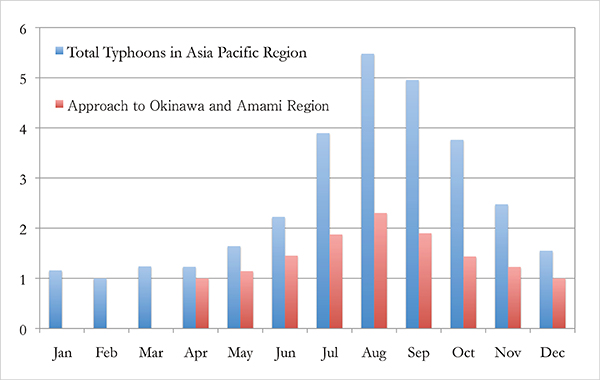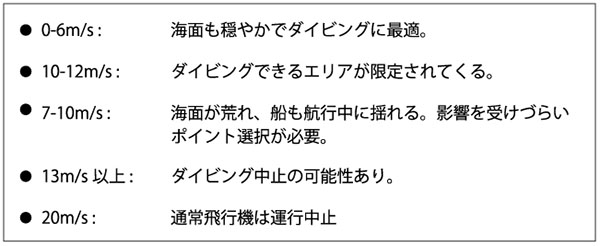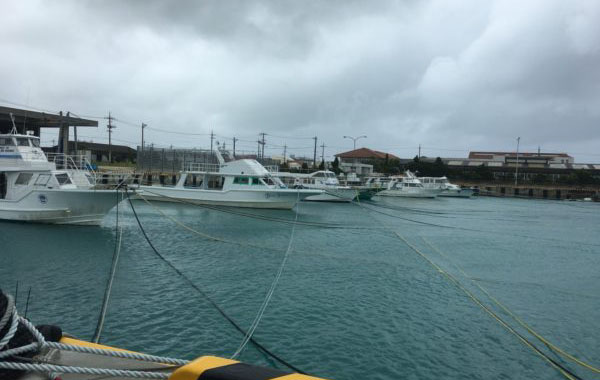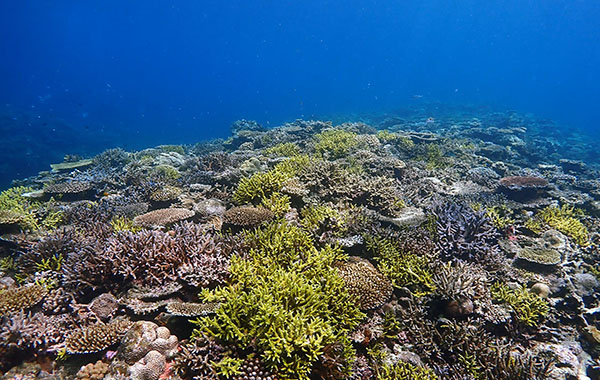
How often does it happen?
According to data from the Japan Meteorological Agency, there are about 26 typhoons that occur in Southeast Asia each year, and about eight of them pass through the Amami/Okinawa region, which stretches about 700 km in length.
On average, about four of them pass over the Yaeyama Islands, including Ishigaki Island, each year. Typhoons usually originate east of the Philippines and move with increasing force, and are at their strongest when they approach the Okinawa region, including the Yaeyama Islands. Coexistence with these typhoons is part of island life. Even typhoons of a scale that would cause some serious damage in Tokyo and other parts of Japan usually have only little impact in this region.
Wind and Diving
Nevertheless, typhoons usually affect diving and other marine leisure activities.
The biggest problem with typhoons is the wind. In general, winds of 0-6 m/s are the best for diving, while winds of 7-10 m/s are quite strong and can cause the boat to rock considerably while underway. 13 m/s or higher can cause a dive to be canceled.


Closure
If the weather conditions make it unsafe to dive, the cruise will be cancelled and guests will be notified as soon as a decision is made. When a typhoon approaches or makes landfall, all vessels are generally secured at the safe harbor and wait for the typhoon to pass.
The period of closure depends on the speed of the typhoon. Sometimes typhoons move very slowly and it may take up to a week to pass, but usually, the closure averages around 3-4 days.
We will post updates on our blog regarding typhoons and whether or not diving is possible, but we may not know if a dive is closed until the last minute.
Typhoons and Travel Planning
So how should you plan your trip? First of all, it is important to understand that this is a part of diving life. For this reason, you should check typhoon information frequently when your diving schedule is approaching. The Japan Meteorological Agency’s typhoon information is not available until after it occurs, but some websites, such as nullschool.net, provide visual information on the development and forecast of low-pressure systems.
Second, if a typhoon is forecasted, you should consider changing your schedule. It usually takes some days for a typhoon to approach and land on Ishigaki Island after it is born, so you can reconsider your travel schedule based on the typhoon’s path information. Sometimes typhoons change their paths, and sometimes you may be able to dive because the typhoon that was expected to hit Ishigaki has changed its path, but safety comes first in marine recreation.
We wish typhoons would never come, but typhoons also have an important role to play in the cycle of nature. During the summer, sea water temperature rises and corals begin to die when the temperature exceeds 30 degrees Celsius, but when typhoons come, the cold water at the bottom of the ocean is stirred up to the surface and maintains a water temperature suitable for living creatures.
Having a long-awaited vacation canceled due to a typhoon is bad, but the destruction of corals and the underwater environment due to the rise in water temperature can have much more serious consequences. If your dives are canceled due to a typhoon, let’s take it positively – there will be a better chance that you will see healthy corals and marine life on your next visit!








